Related Research Articles

The Lord Mayor of London is the mayor of the City of London, England, and the leader of the City of London Corporation. Within the City, the Lord Mayor is accorded precedence over all individuals except the sovereign and retains various traditional powers, rights, and privileges, including the title and style The Right Honourable Lord Mayor of London.
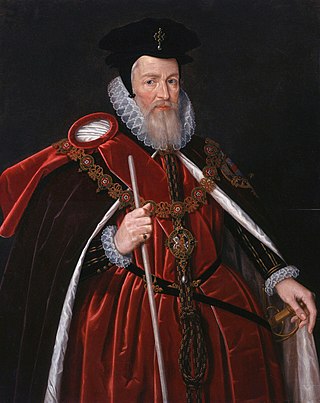
William Cecil, 1st Baron Burghley was an English statesman, the chief adviser of Queen Elizabeth I for most of her reign, twice Secretary of State and Lord High Treasurer from 1572. In his description in the Encyclopædia Britannica Eleventh Edition, A.F. Pollard wrote, "From 1558 for forty years the biography of Cecil is almost indistinguishable from that of Elizabeth and from the history of England."
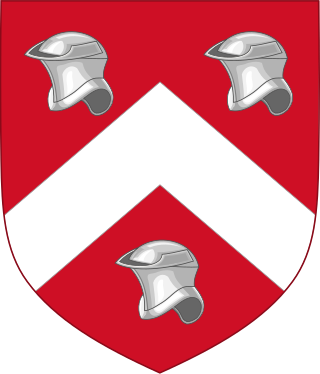
Sir Owen Tudor was a Welsh courtier and the second husband of Queen Catherine of Valois (1401–1437), widow of King Henry V of England. He was the grandfather of Henry VII, founder of the Tudor dynasty.
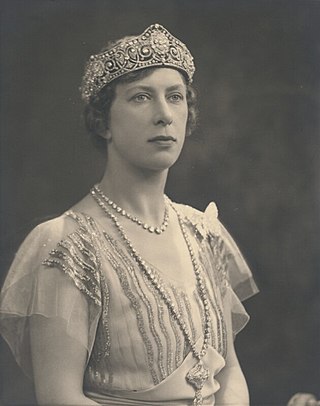
Mary, Princess Royal was a member of the British royal family. She was the only daughter of King George V and Queen Mary, the sister of Kings Edward VIII and George VI, and aunt of Elizabeth II. In the First World War, she performed charity work in support of servicemen and their families. She married Henry Lascelles, Viscount Lascelles, in 1922. Mary was given the title of Princess Royal in 1932. During the Second World War, she was Controller Commandant of the Auxiliary Territorial Service. The Princess Royal and the Earl of Harewood had two sons, George Lascelles, 7th Earl of Harewood, and The Honourable Gerald Lascelles.

Adelaide of Saxe-Meiningen was Queen of the United Kingdom of Great Britain and Ireland and Queen of Hanover from 26 June 1830 to 20 June 1837 as the wife of King William IV. Adelaide was the daughter of George I, Duke of Saxe-Meiningen, and Luise Eleonore of Hohenlohe-Langenburg. Adelaide, the capital city of South Australia, is named after her.
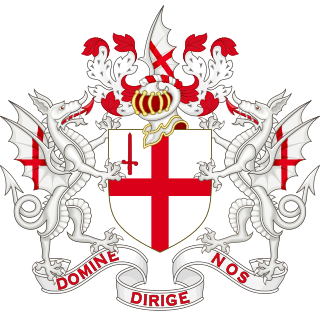
The City of London Corporation, officially and legally the Mayor and Commonalty and Citizens of the City of London, is the local authority of the City of London, the historic centre of London and the location of much of the United Kingdom's financial sector.

The Lord Mayor's Show is one of the best-known annual events in London as well as one of the longest-established, dating back to the 13th century. A new lord mayor is appointed every year, and the public parade that takes place as their inauguration ceremony reflects that this was once one of the most prominent offices in England and subsequently the United Kingdom.
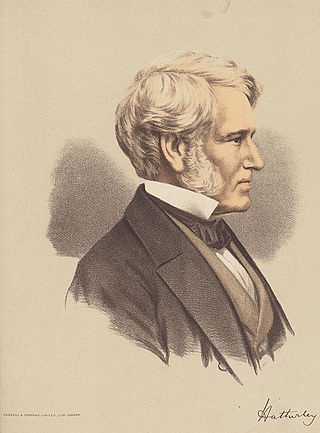
William Page Wood, 1st Baron Hatherley, PC was a British lawyer and statesman who served as a Liberal Lord High Chancellor of Great Britain between 1868 and 1872 in William Ewart Gladstone's first ministry.

Thomas Sackville, 1st Earl of Dorset was an English statesman, poet, and dramatist. He was the son of Richard Sackville, a cousin to Anne Boleyn. He was a Member of Parliament and Lord High Treasurer.

Sir George Hayter was an English painter, specialising in portraits and large works involving sometimes several hundred individual portraits. Queen Victoria appreciated his merits and appointed Hayter her Principal Painter in Ordinary and also awarded him a Knighthood in 1841.

Tring Park Mansion or Mansion House, Tring Park, is a large country house in Tring, Hertfordshire. The house, as "Tring Park", was used, and from 1872 owned, by members of the Rothschild family from 1838 to 1945.

Sir Richard Levett was an English merchant, politician and slave trader who served as Lord Mayor of London in 1699. Born in Ashwell, Rutland, he moved to London and established a pioneering mercantile career, becoming involved with the Bank of England and the East India Company. Levett was acquainted with many prominent individuals during his time in London, among them Samuel Pepys, John Houblon, William Gore, Sir John Holt, Robert Hooke, and Charles Eyre. He acquired several properties in Kew and Cripplegate.

Sir William Purdie Treloar, 1st Baronet was an English businessman who was Sheriff of London in 1889–1900 and Lord Mayor of London in 1906–1907. He established an active "Cripples' Fund" as his mayoral appeal.
Sir Richard Martin was an English goldsmith and Master of the Mint who served as Sheriff and twice as Lord Mayor of the City of London during the reign of Elizabeth I.
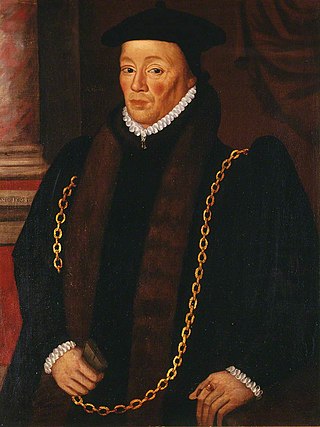
Sir William Garrard (1518–1571), also Garrett, Gerrarde, etc., was a Tudor magnate of London, a merchant citizen in the Worshipful Company of Haberdashers, who became alderman, Sheriff (1552–1553) and Lord Mayor of London (1555–1556) and was returned as an MP for the City of London. He was a senior founding officer of the Company of Merchant Adventurers to New Lands in 1554/55, having been involved in its enterprises since the beginnings in King Edward VI's time, and for the last decade of his life was one of its permanent governors. He worked hard and invested largely to expand English overseas trade not only to Russia and the Levant but also to the Barbary Coast and to West Africa and Guinea.

Essex's Rebellion was an unsuccessful rebellion led by Robert Devereux, 2nd Earl of Essex, in 1601 against Queen Elizabeth I of England and the court faction led by Sir Robert Cecil to gain further influence at court.
Sir John Leveson was an English politician. He was instrumental in putting down the Essex rebellion of 8 February 1601.
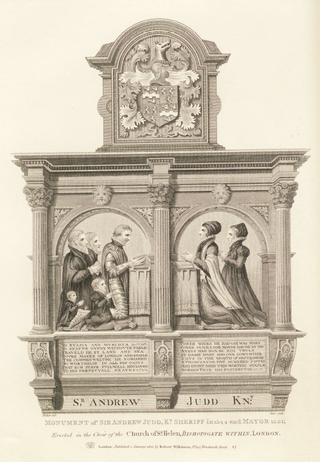
Sir Andrew Judde or Judd was a 16th-century English merchant and Lord Mayor of London. He was knighted on 15 February 1551.

The City of London Swords are five two-handed ceremonial swords belonging to the Corporation of London, namely the Mourning Sword, the Pearl Sword, the State Sword, the Old Bailey Sword and the Mansion House Justice Room Sword. A sixth sword, the Travelling Sword of State, replaces the Sword of State for visits outside the City. They comprise part of the plate collection of Mansion House, the official residence of the Lord Mayor of London.
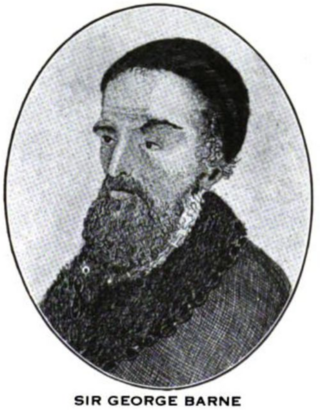
Sir George Barne was an English businessman in the City of London who was active in developing new trading links with Russia, West Africa and North America, far outside what had been traditional English trading patterns. Created a knight in 1553, he served as Sheriff of London and Lord Mayor of London. He was the father of Sir George Barne and grandfather of Sir William Barne. Nicholas Culverwell was probably a nephew.
References
- ↑ T. Hearne (ed.), Joannis Lelandi Antiquarii De Rebus Britannicis Collectanea, 2nd Edition (W & J Richardson, London 1770), IV, pp. 216–233.
- Lord Mayors of the City of London from 1189, cityoflondon.gov.uk